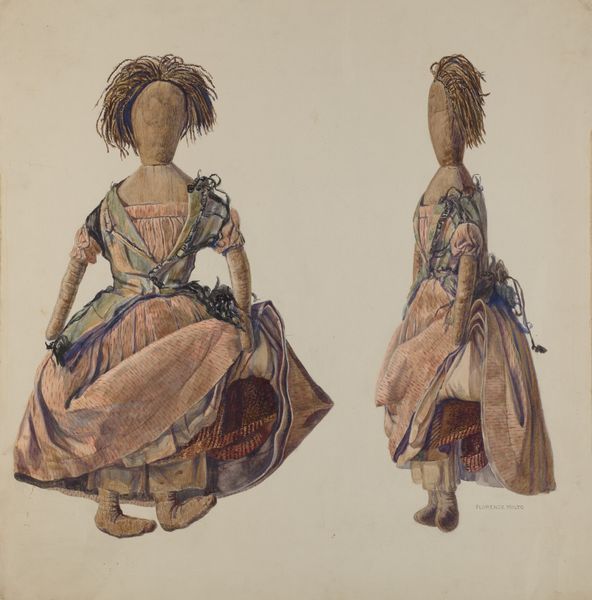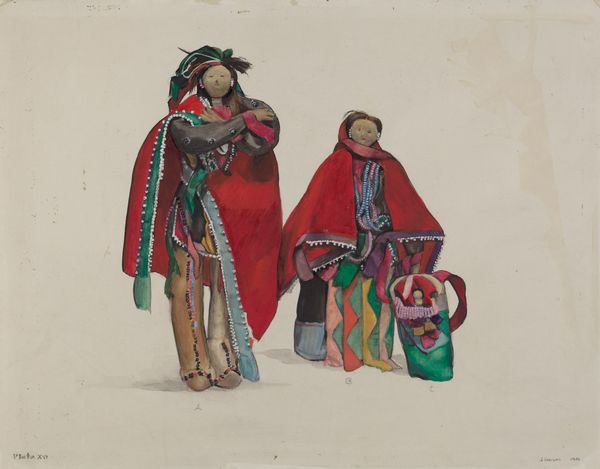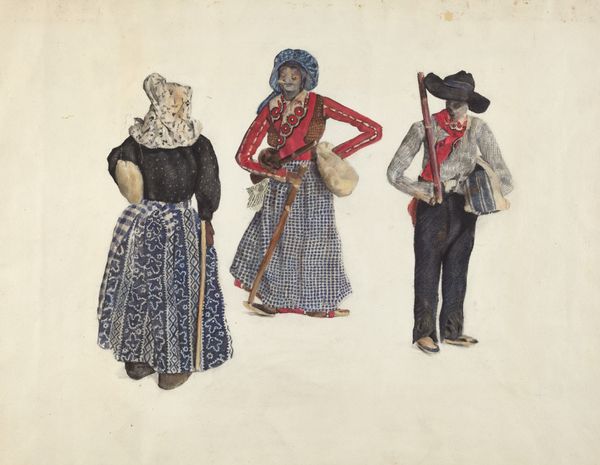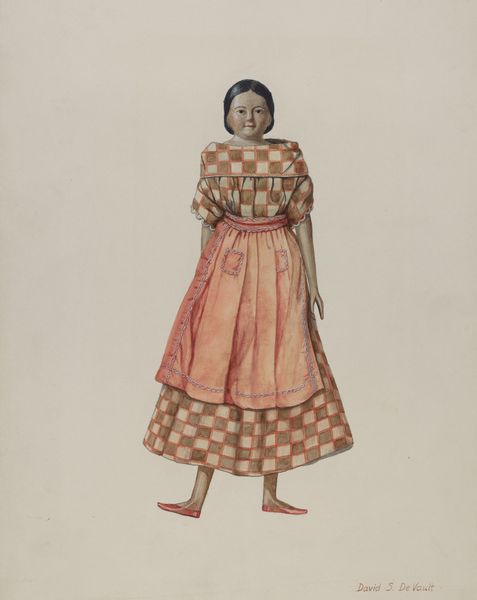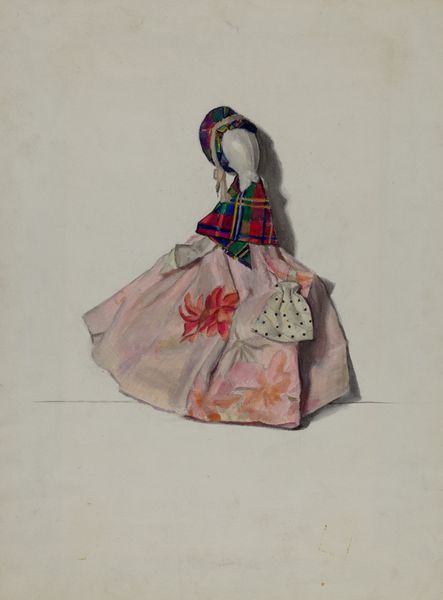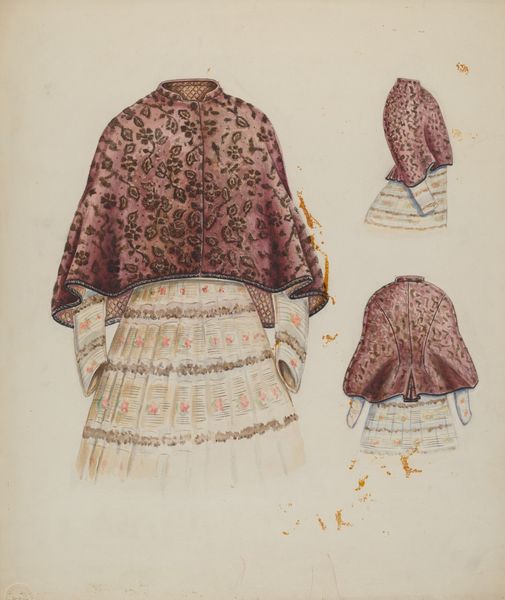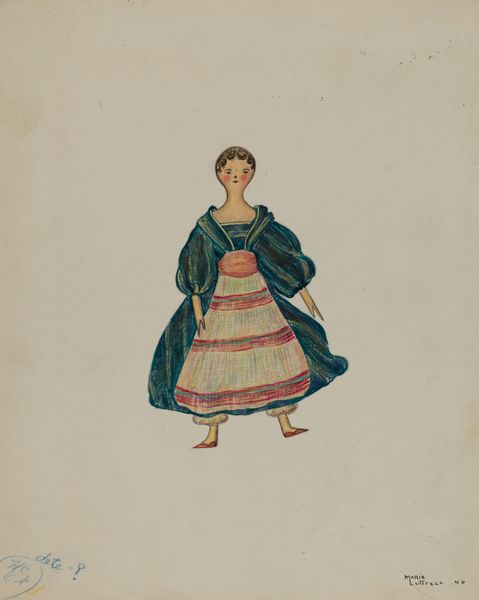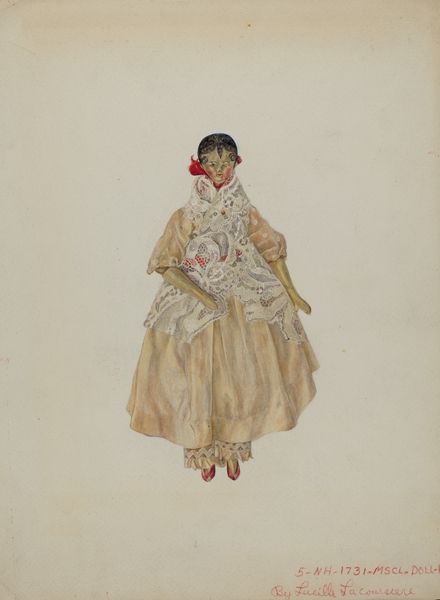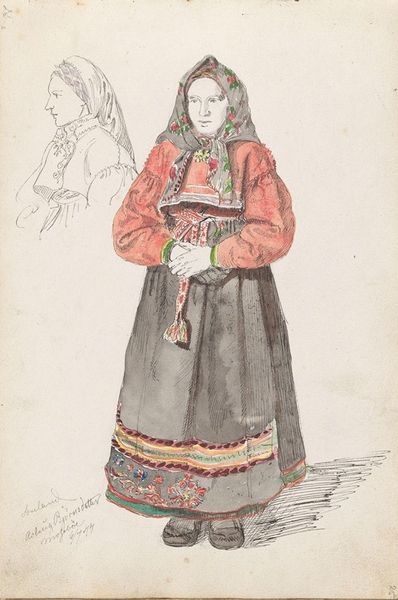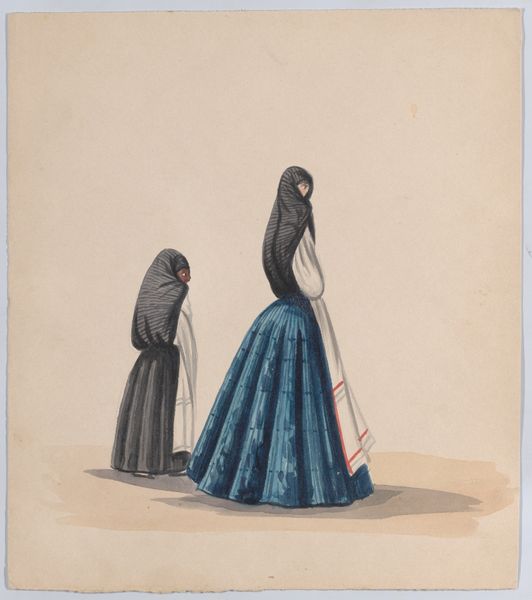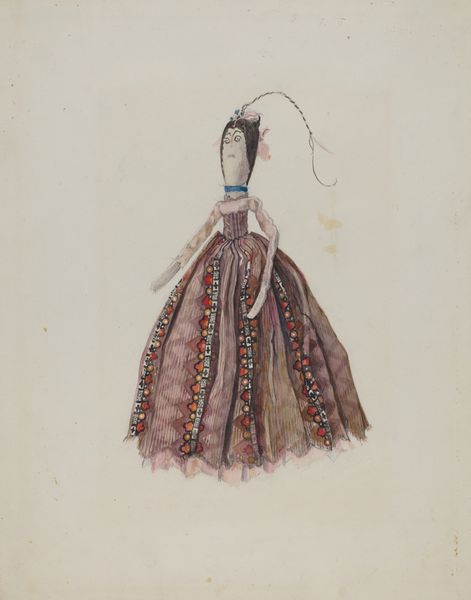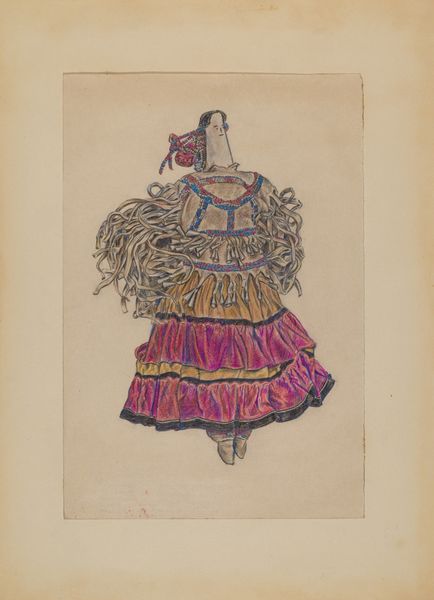
painting
#
painting
#
figuration
#
oil painting
#
naïve-art
#
watercolour illustration
#
watercolor
Dimensions: overall: 40.3 x 39.4 cm (15 7/8 x 15 1/2 in.) Original IAD Object: 11 3/4" high
Copyright: National Gallery of Art: CC0 1.0
Curator: This watercolor, titled "Dolls (Apache Women)," dates from 1935 to 1942 and offers a glimpse into folk art traditions. The artist, Jane Iverson, captures the detailed garments and distinctive features of these figures. Editor: My first thought is that there's a kind of unsettling stillness to it. The blank expressions and rigid postures of the dolls, combined with the faded colors, create a feeling that's almost eerie. It's beautiful, yes, but with an undercurrent of something else. Curator: Indeed, these weren't just toys, but cultural objects with deep roots. Examining the history, we understand these dolls often played important roles in ceremonies or as representations of cultural ideals. The colors and patterns on the garments communicate social and spiritual status within Apache society. Editor: And how fascinating to consider that dolls often function as vessels for cultural transmission, encoding stories and values from one generation to the next. The fact that these are labeled specifically as Apache women pushes me to think about representation. I wonder how the artist approached such a subject during that era and whether her gaze truly reflects Apache perspectives? Curator: That is always the key question, isn’t it? While Iverson documented a specific material culture, these paintings inevitably carried her own interpretation of what she saw and learned. However, the artwork’s preservation allows future generations, particularly those with indigenous heritage, the opportunity to reclaim these objects. Museums have a public duty to support these restorative roles and share archival knowledge concerning Iverson’s research. Editor: Absolutely, and this is what moves it from mere historical document to active participant in cultural dialogue. The artwork becomes a space for engaging with themes of representation, cultural preservation, and perhaps even confronting difficult histories. I'm left wondering what those originating Apache communities would say about this representation today. Curator: A poignant question. Iverson’s paintings should inspire institutions to build partnerships and programs dedicated to ethical repatriation of art history, so communities retain complete authoritative power over how their histories and visual cultures are remembered and shown to others. Editor: A good thought that certainly enhances our viewing of "Dolls." The layered meanings and potential for intercultural conversation really do create a sense of deep artistic engagement beyond just looking at nice watercolor.
Comments
No comments
Be the first to comment and join the conversation on the ultimate creative platform.

